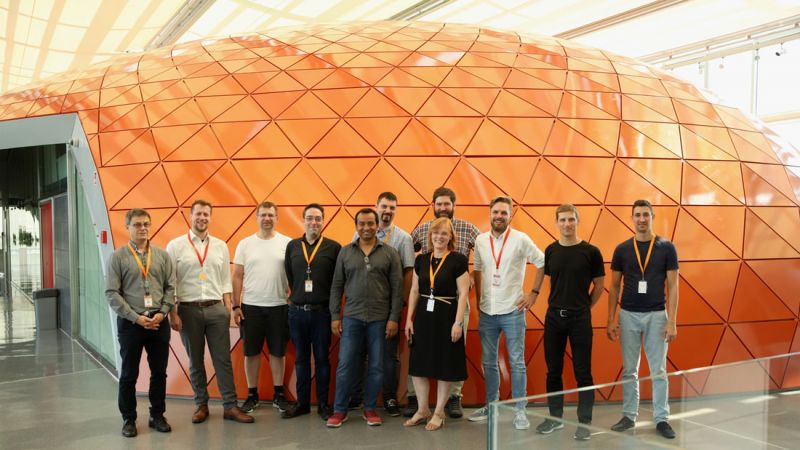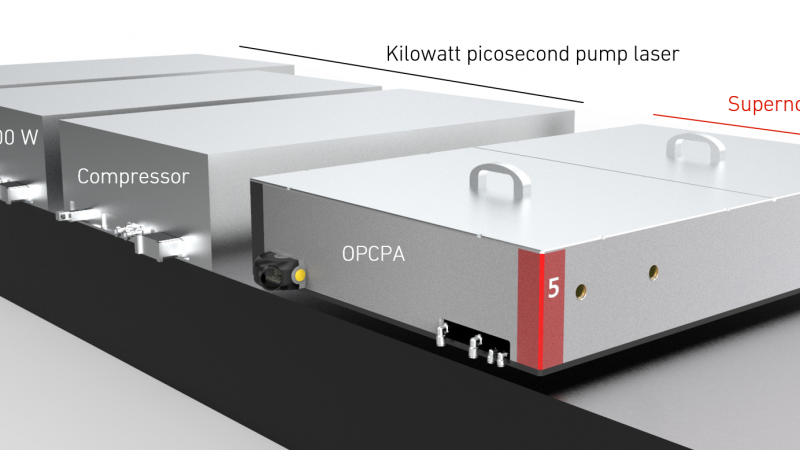On this page
What is optical parametric chirped pulse amplification (OPCPA)?
The basis of Class 5 Photonics’ high-power femtosecond laser technology is the nonlinear amplifier concept called optical parametric chirped pulse amplification (OPCPA).
The concept of OPCPA combines the laser chirped-pulse amplification (CPA) scheme with optical parametric amplification (OPA). With this powerful combination, the advantages of both methods are merged. Ultrashort femtosecond pulses can be amplified to high pulse energies at high repetition rates.
Class 5 Photonics’ products are complete system integrations comprising a commercial Yb-based pump laser, a White Light Generation (WLG) to generate a broad-band seed pulse, a stretcher to optimize bandwidth and temporal overlap between seed and pump pulse, an optical parametric amplifier (OPA) to amplify the seed pulse, and a compressor to compress the amplified pulse to its Fourier transform limit.

How does optical parametric amplification (OPA) work?
The energy of an intense laser pulse (pump pulse) is down-converted to a signal and an idler pulse using a nonlinear optical crystal. In contrast to conventional laser amplifiers, no population inversion and thus no energy storage within the medium is required for the amplification. As the photon energy difference is carried away by the idler radiation, no quantum defect exists, which makes the system highly scalable in average power. Furthermore, non-collinear phase-matching in OPA (NOPA) offers a large amplification bandwidth and hence access to few-cycle pulse durations.

What is white light generation (WLG)?
White Light Generation (WLG) is used to generate the broadband seed pulse for the optical parametric amplification (OPA) process. For this a small fraction of the pump laser is used to generate via filamentation in bulk a white light continuum. Class 5 Photonics has conducted extensive development into the stability of the WLG process. Class 5 Photonics’ patented white light generation technology (WLG) provides maintenance free and stable operation.

